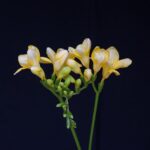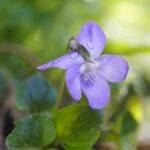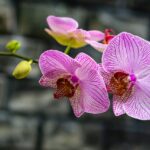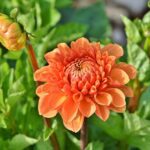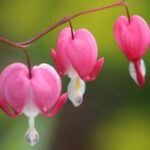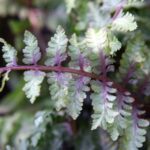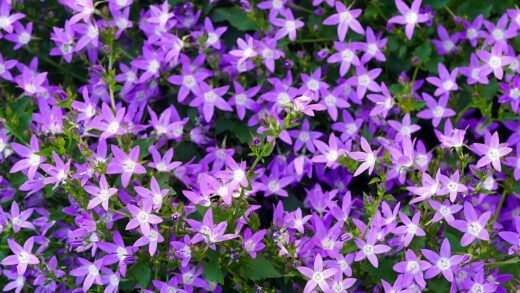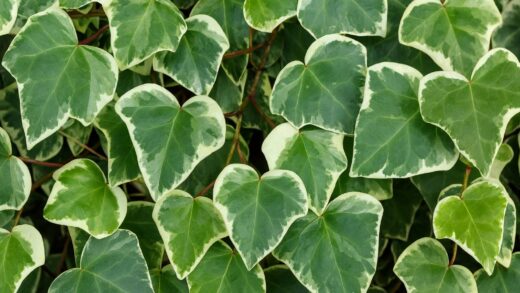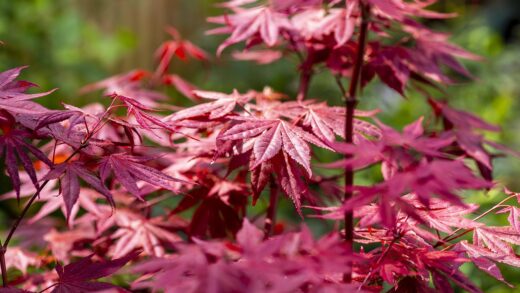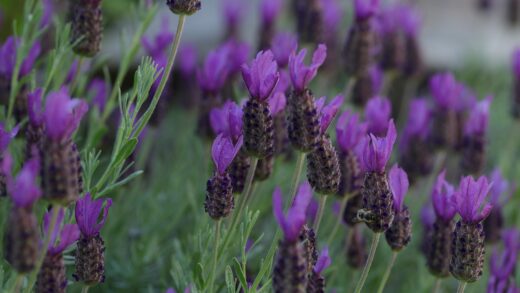The essential role of full sun
English lavender is, at its core, a sun-worshipping plant, and providing it with an abundance of direct sunlight is the most fundamental requirement for its health, vigor, and beauty. This plant’s entire biology is geared towards thriving in the bright, unfiltered sun of its native Mediterranean habitat. To achieve the iconic dense, mounded shape, silvery foliage, and a profusion of fragrant purple flower spikes, you must plant it in a location that receives a minimum of six, and ideally eight or more, hours of direct sun each day. This is a non-negotiable aspect of lavender care; no amount of proper watering or perfect soil can compensate for a lack of adequate sunlight. Without sufficient sun, the plant simply cannot perform the photosynthesis needed to support robust growth and flowering.
The quantity and quality of light directly impact every aspect of the lavender plant’s development. Ample sunlight fuels the production of the essential oils that give lavender its characteristic, beloved fragrance. A plant grown in a shady location will have a noticeably weaker scent compared to one grown in full sun. Furthermore, strong light encourages a compact, bushy growth habit. When lavender is deprived of light, it will stretch and become “leggy,” with long, weak stems and sparse foliage as it reaches for the sun. This not only results in an unattractive, floppy plant but also one that is more susceptible to breaking and disease.
Sunlight also plays a crucial role in preventing the moisture-related problems that are so detrimental to lavender. The intense heat from the sun helps to quickly dry morning dew from the foliage and evaporates excess moisture from the soil surface. This creates a drier microclimate around the plant, which is critical for preventing the development of fungal diseases like botrytis and root rot. In a shady, damp location, the foliage stays wet for longer, and the soil remains cool and moist, creating the perfect conditions for the pathogens that lavender is most vulnerable to.
When selecting a planting site, a south-facing or west-facing location is typically the best choice, as these exposures receive the most intense and prolonged sunlight throughout the day. Before planting, observe the potential spot at different times of the day to ensure it is not cast into shadow by trees, buildings, or other structures. Providing the sunniest spot in your garden is the greatest gift you can give your lavender plant, setting the stage for it to flourish and reward you with its sensory delights for many years.
The consequences of insufficient light
Planting English lavender in a location with insufficient light is a common mistake that leads to a cascade of negative consequences, resulting in a plant that is a shadow of its potential self. The most immediate and obvious symptom of inadequate sun is a poor and leggy growth habit. Instead of forming a tight, silvery mound, the plant will produce long, thin, and weak stems with large gaps between the leaves. This is a physiological response known as etiolation, where the plant is actively stretching and searching for a better light source, diverting its energy into stem elongation rather than into creating a sturdy, bushy framework.
More articles on this topic
Beyond its poor structure, a lavender plant grown in the shade will also be a profound disappointment when it comes to flowering. The production of flower buds is an energy-intensive process that is directly fueled by photosynthesis. With limited sunlight, the plant simply does not have the resources to produce a significant number of blooms. The flower spikes that do manage to form will be smaller, less numerous, and the color of the flowers will often appear washed out and less vibrant. For a plant prized for its floral display, this is a significant drawback.
Furthermore, the lack of sun directly impacts the plant’s aromatic qualities. The synthesis of the complex essential oils responsible for lavender’s signature fragrance is heavily dependent on sunlight. A plant languishing in the shade will have a much weaker scent, both in its foliage and its flowers. This diminished fragrance reduces one of the primary reasons for growing lavender, whether it be for garden aromatherapy, culinary use, or crafting. The same plant, if moved to a sunny location, would produce a significantly more potent and complex aroma.
Perhaps the most serious consequence of insufficient light is the increased susceptibility to disease. Shady areas are inherently cooler and damper, and the dense foliage of a lavender plant will take much longer to dry after rain or morning dew. This prolonged moisture creates an ideal breeding ground for fungal pathogens. Root rot, gray mold, and leaf spot are all far more likely to take hold in a plant that is weakened by lack of sun and situated in a damp, poorly-circulated environment, often leading to the plant’s eventual decline and death.
Light requirements for indoor cultivation
Growing English lavender indoors can be a challenge, primarily because it is incredibly difficult to replicate the intense, direct sunlight the plant requires within a typical home environment. While it may be tempting to place a pot on a sunny windowsill, even the brightest south-facing window in a home provides significantly less light intensity than an outdoor location. The glass filters out some of the light spectrum, and the duration of direct sun is often limited. Therefore, to successfully grow lavender indoors, supplemental lighting is almost always a necessity.
More articles on this topic
If you are determined to grow lavender inside, you must be prepared to provide high-intensity artificial light. A standard household lamp will not be sufficient. You will need to invest in a full-spectrum grow light, such as a high-output fluorescent or an LED plant light. These lights are designed to mimic the spectrum of natural sunlight, providing the energy the plant needs for healthy growth and photosynthesis. The light source should be placed close to the plant, typically just a few inches above the foliage, to ensure maximum intensity.
The duration of the supplemental lighting is just as important as its intensity. To simulate the long summer days that lavender loves, the grow light should be on for at least 12 to 14 hours per day. Using an automatic timer is the easiest way to ensure this consistency. You must position the lavender directly under the light source and rotate the pot regularly to ensure all sides of the plant receive equal exposure, preventing it from growing lopsided as it reaches towards the light.
Even with the best supplemental lighting, you must also pay close attention to other aspects of indoor care. Good air circulation is crucial to prevent fungal issues, so you may need to run a small fan in the room for a few hours each day. Watering must be done carefully, allowing the soil to dry out completely, and the pot must have excellent drainage. Despite these efforts, it is important to have realistic expectations; an indoor-grown lavender will likely never be as large, robust, or floriferous as one grown outdoors in its preferred sunny, open-air conditions.
Seasonal light variations and considerations
The light requirements of English lavender remain consistent throughout its active growing season, but the availability of natural light changes with the seasons, which can impact the plant’s cycle. In the spring, as the sun’s angle gets higher and the days grow longer, the increasing light intensity and duration trigger the plant to break dormancy and begin putting on new growth. This is the start of its most active period of photosynthesis, which will fuel its growth for the entire season. It is crucial that the plant has access to full sun during this time to build a strong foundation for flowering.
During the peak of summer, the sun is at its most intense, and the days are at their longest. This is when lavender is in its element, basking in the heat and light. In extremely hot climates, there is a small risk of sun scald on the foliage, but this is very rare for English lavender, which is well-adapted to intense sun. The abundance of light during this period maximizes flower production and oil concentration, leading to the most vibrant blooms and the strongest fragrance. This is the time when the plant is at its absolute best.
As autumn approaches, the days begin to shorten, and the intensity of the sunlight wanes. This change in photoperiod is a natural signal to the lavender plant to begin slowing down its growth and preparing for winter dormancy. It will cease producing new flowers and start to harden off its existing stems in preparation for the cold weather ahead. The plant is still photosynthesizing and storing energy in its roots for the following spring, so continued access to sunlight, even the less intense autumn sun, is still important.
In the winter, the plant is dormant, and its need for light is minimal. The low angle of the sun and the very short days provide all the light that is necessary to keep the plant’s basic systems ticking over. In areas with snow cover, the plant will be in darkness for extended periods, which is perfectly normal and not a cause for concern. The primary light-related consideration for winter is to ensure that when the snow melts, the plant is not in a spot that remains shady and waterlogged, as this can be fatal during the transition into spring.







